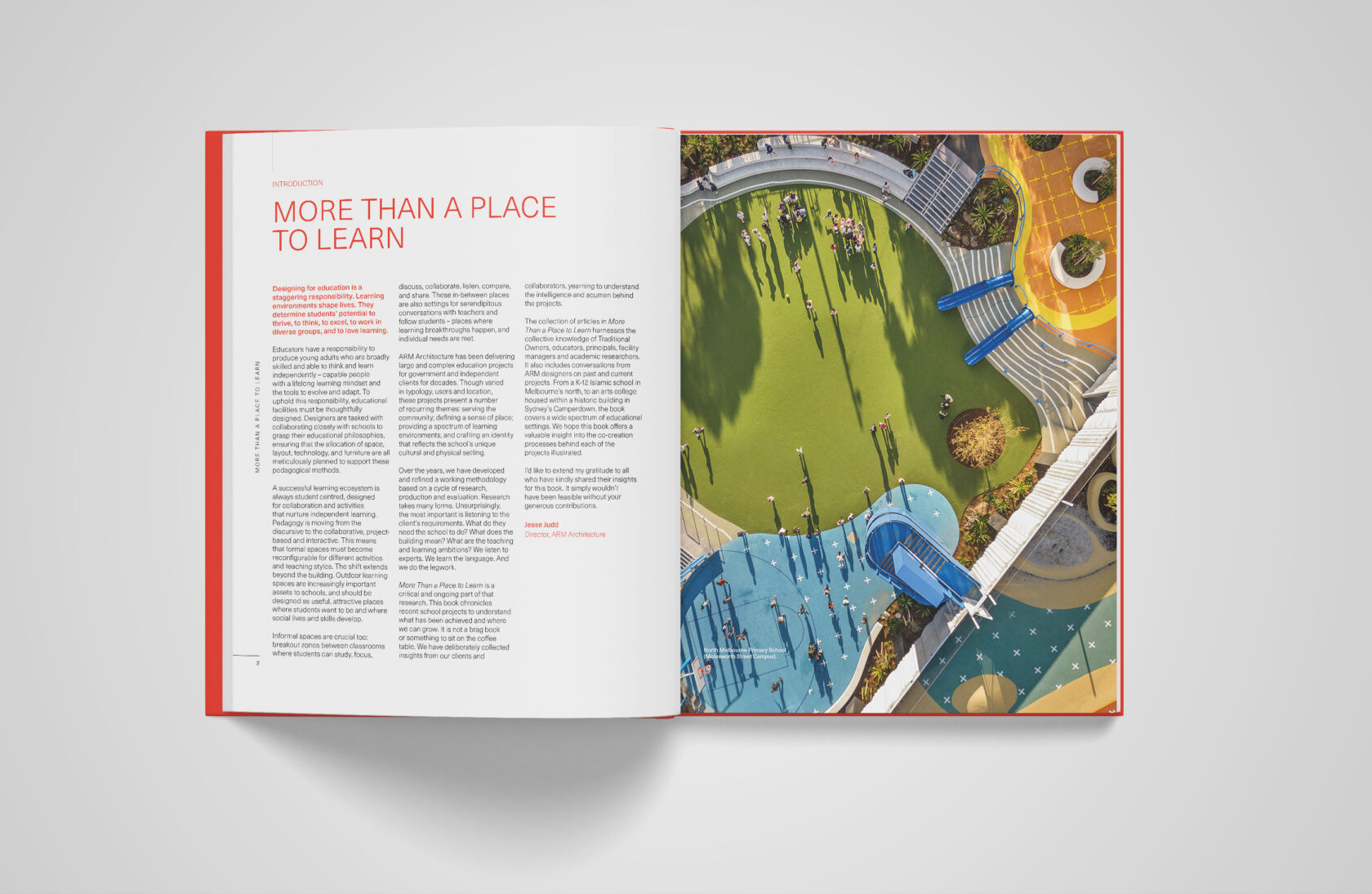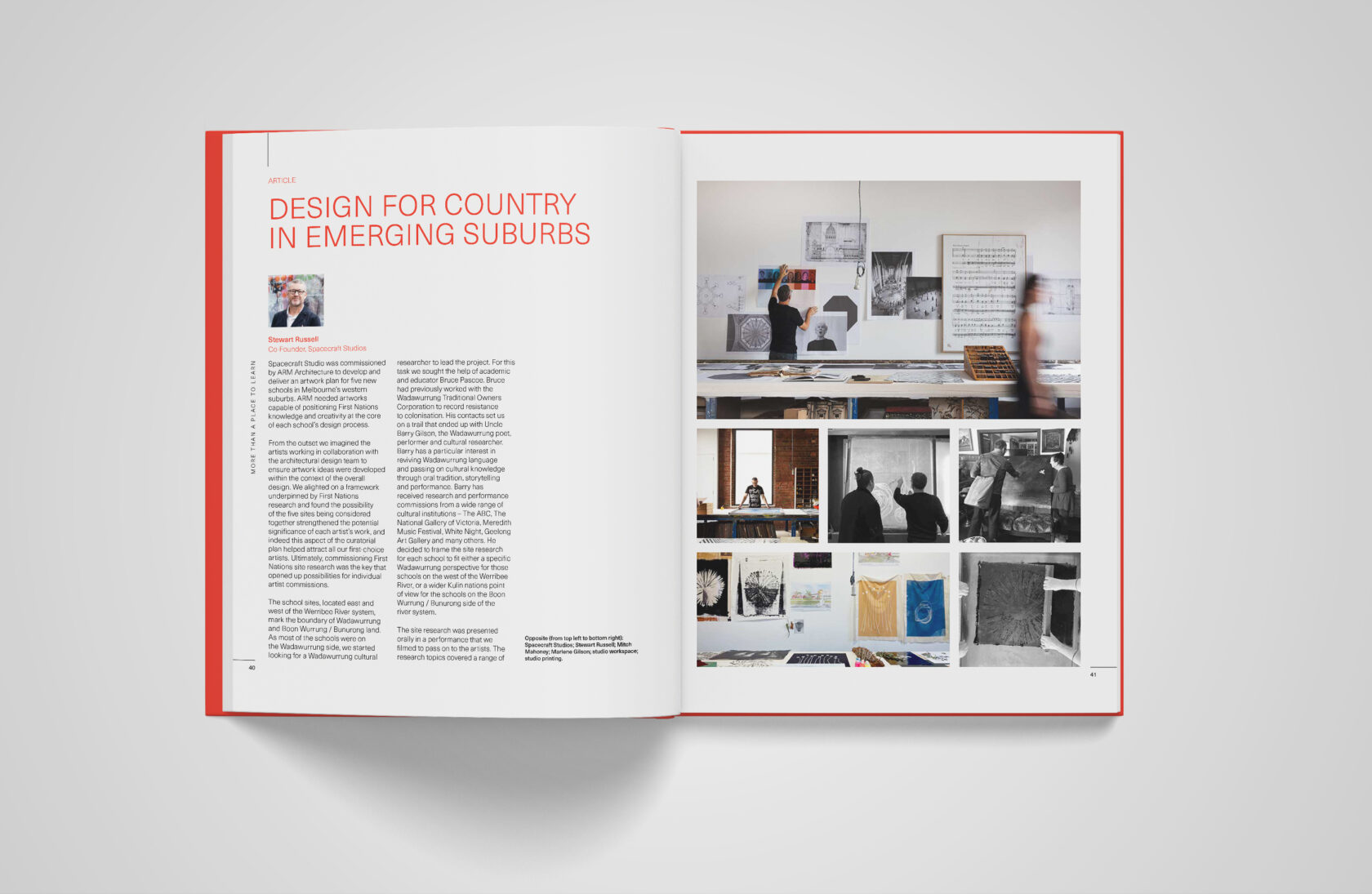New book: More than a place to learn
Designing for education is a staggering responsibility. Learning environments shape lives. They determine students’ potential to thrive, to think, to excel, to work in diverse groups, and to love learning.
Educators have a responsibility to produce young adults who are broadly skilled and able to think and learn independently – capable people with a lifelong learning mindset and the tools to evolve and adapt. To uphold this responsibility, educational facilities must be thoughtfully designed. Designers are tasked with collaborating closely with schools to grasp their educational philosophies, ensuring that the allocation of space, layout, technology, and furniture are all meticulously planned to support these pedagogical methods.
ARM Architecture has been delivering large and complex education projects for government and independent clients for decades. Though varied in typology, users and location, these projects present a number of recurring themes: serving the community; defining a sense of place; providing a spectrum of learning environments; and crafting an identity that reflects the school’s unique cultural and physical setting.

Over the years, we have developed and refined a working methodology based on a cycle of research, production and evaluation. Research takes many forms. Unsurprisingly, the most important is listening to the client’s requirements. What do they need the school to do? What does the building mean? What are the teaching and learning ambitions? We listen to experts. We learn the language. And we do the legwork.

More Than a Place to Learn is a critical and ongoing part of that research. This book chronicles recent school projects to understand what has been achieved and where we can grow. It is not a brag book or something to sit on the coffee table. We have deliberately collected insights from our clients and collaborators, yearning to understand the intelligence and acumen behind the projects.

The collection of articles in More Than a Place to Learn harnesses the collective knowledge of Traditional Owners, educators, principals, facility managers and academic researchers. It also includes conversations from ARM designers on past and current projects. From a K-12 Islamic school in Melbourne’s north, to an arts college housed within a historic building in Sydney’s Camperdown, the book covers a wide spectrum of educational settings. We hope this book offers a valuable insight into the co-creation processes behind each of the projects illustrated.

We will begin publishing selected articles from the book over on our LinkedIn in the coming months, keep an eye out.
For a physical copy, please register your interest here. Copies are limited.